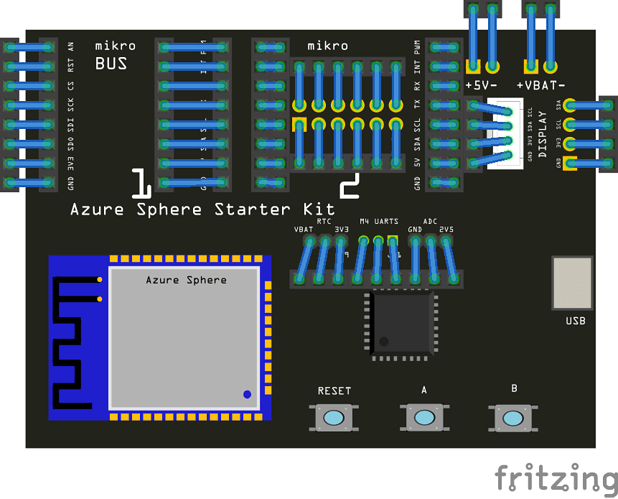I hadn’t forgotten this, it just took some time as it had to be made from scratch. Luckily their documentation is good, so that was easier than it might have been. In any case here is the development board part and its test sketch. It has no pcb layer (although the headers in the test sketch show up in pcb), as it isn’t practical to put a pcb on top of this and that saved a bunch of work.
Part:
azure-sphere.fzpz (32.1 KB)
Test sketch to make sure it works.
test-Sketch.fzz (18.0 KB)
and for the rest of you a png of bb from the test sketch
All the common pins have been bused, so if you click on a pin, all the other pins that share that pin should light up yellow. The description fields (if you hover over a pin in any view) indicate all the possible functions for that pin. If you or @KjellM have contacts at Avnet, they might be interested in pointing out a Fritzing part is available in their docs (and if they like Fritzing may be willing to provide support as well  ) because it would make documenting projects using their dev boards easier. At them moment I’m going to ignore the actual MT3620 part as it appears to be about 128 pins or so (and thus a lot of work) until someone actually asks for it. Hope this helps.
) because it would make documenting projects using their dev boards easier. At them moment I’m going to ignore the actual MT3620 part as it appears to be about 128 pins or so (and thus a lot of work) until someone actually asks for it. Hope this helps.
Peter
